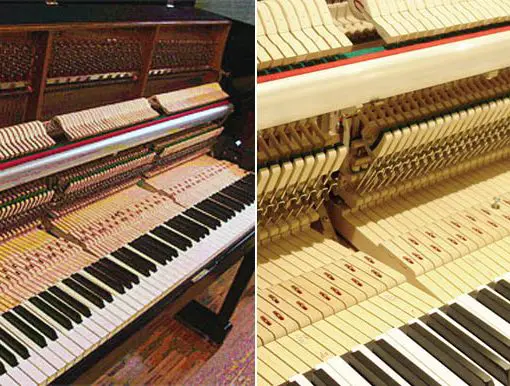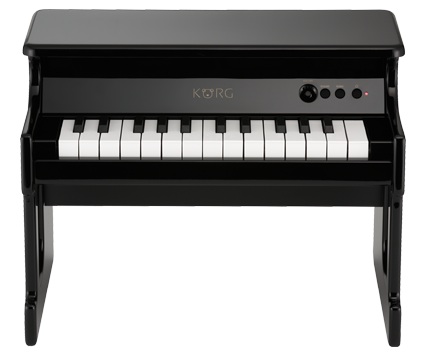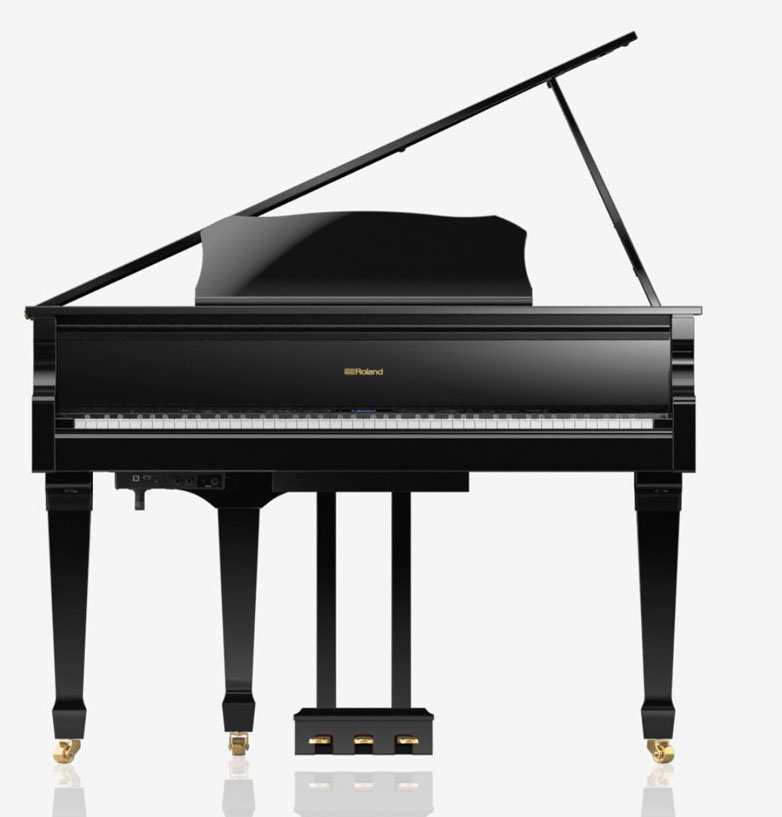A new “bite splint”, which is operated by placing it in the mouth, could make it possible for those without use of their legs/feet to control the damper (sustain) pedal on a piano.
For more than 20 years, there have been electromagnetic pedal controls for paraplegic pianists – mostly accident victims – that were invented by Bayreuth piano manufacturer Steingraeber & Söhne and are custom made.
Pulse generators such as light sensors, headrests, back cushions, neck braces, and mouth tubes make it possible for disabled pianists to play pieces that include pedal work, but the magnets only allow the pedal to be switched on or off.
Heidelberg Univeristy researcher Ing Rüdiger Rupp and team developed a bite splint with a pressure-sensitive sensor that the pianist can hold in his mouth to control the pedal. It uses a highly sensitive strength or pressure sensor, embedded in the chewing surface of a bite splint attached to the upper jaw. It works wirelessly, without any visible cables or devices.
“The disabled patient can thus control the entire range of pedal action – including intermediate positions and the speed with which the pedal is depressed,” explained Rupp.
No word on when the device might be commercially available.




7 thoughts on “New bite splint allows paraplegics to control piano damper pedal”
This is a question rather than a comment: I’m a paraplegic (without the use of my legs or feet), and I’ve been trying to learn to play the piano. I have a Roland digital piano (RD600), and I notice that the sustain pedal is just an on-off switch. I’ve been looking for a way to use the pedal to sustain sound without using my feet (e.g., a small device that I can hold in my mouth), but have not been able to find anything. I’m told that many MIDI devices can be modified/adjusted to work as a pedal, and I’d appreciate it if anyone could give me some suggestions about this (feel free to send me an email if you how to solve this problem).
Thanks.
While I don’t know of a real world example, it would likely be possible to fashion such a device to work as a sustain pedal.
You’re right  a sustain pedal (at least, a standard “synth” or “simple” one that doesn’t handle such things as half-pedalling) is just an on/off switch, so any device can be used to create and break a circuit connected to a 1/4-inch phono jack should do the trick. Even dismantling an existing sustain pedal so you just have the innards (the little button underneath the plastic pedal and the wiring) and then rehousing in a much smaller and mouth-friendly case would likely work.
I understand your point about a MIDI device, indeed you could possibly create something that generates the correct MIDI messages, but that sounds more complicated.
Sorry I don’t have a real example to share with you, but if I come across something I’ll let you know.
Hi Andy,
Thank you for the response. You’re right in that making a sustain pedal smaller and mouth-friendly may be the simplest solution. I have tried this approach with some small Yamaha pedals (e.g., breaking them, keeping the wires, and creating a smaller housing, etc.), but unfortunately I have not been able to come up with one small and functional enough. I guess I’ll keep going in this direction then. It’s frustrating that a wireless splint for a real piano could be commercially avaiable soon, and yet I can’t seem to find one for a digital piano (which supposedly will be much less complicated).
If you, or anyone else, come across something that may work, I would be interested to hear about it.
Thanks.
Absolutely, it would be so much simpler, as it’s really just a circuit maker/breaker. Unfortunately I’m guessing there’s not the market for any of the large manufacturers to create one. Doesn’t make it any less worthy, though. Have you tried asking at some of the piano forums, such as Piano World?
One of those with a Moog Taurus or with a foot-keyboard controller would be the bomb. Seriously.
It sure is nice to see some efforts to advance the capabilities of keyboards for the handicapped. I remember my Dad’s old Organ had a bar that slid down underneath the keyboard for vibrato effects. Something similar for your elbow maybe?
Bonjour,
Mon professeur de piano et moi-même recherchons un système remplaçant la pédale sustain sur un piano numérique car il est devenu paraplégique.
je suis intéressé par toute information, conseils, fournisseurs….
merci de votre aide